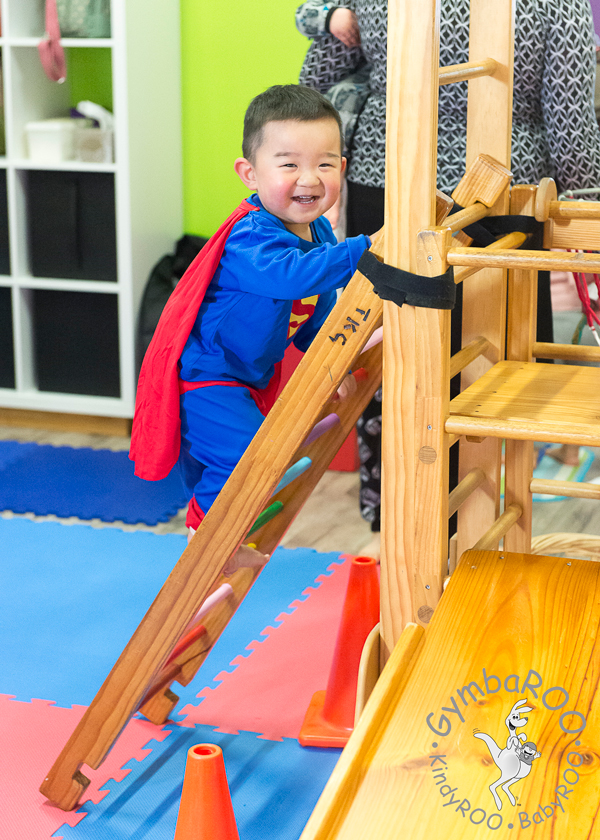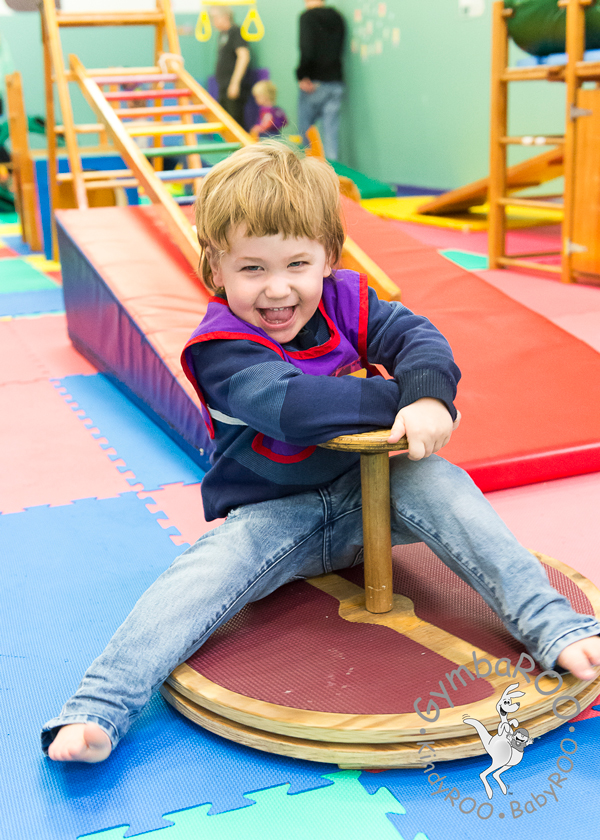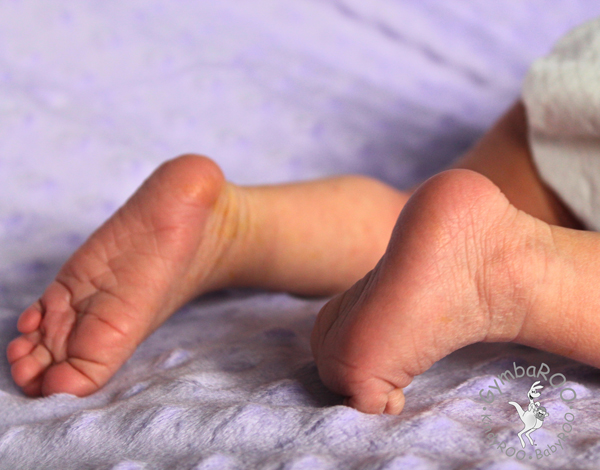Join the thousands of parents already raising smarter, happier babies with our online baby classes: The Active Babies Smart Kids series. Click here.
GymbaROO-KindyROO kids are excelling academically, emotionally, in leadership roles and on the sporting field. Find us at: GymbaROO-KindyROO
Dr Jane Williams and Bindy Cummings
Does your toddler or pre-schooler walk on their toes, the tip of their toes, their toe knuckles or even on their knees? You may be wondering if this is OK. Most of these different walking techniques usually transition into a ‘normal’ walking pattern, however sometimes, these patterns persist and maybe cause for concern. When should you be concerned and what can you do to help your child if you are? Here are a few tips.
Tip-Toe Walking
Lots of babies who are cruising (holding onto furniture and learning to walk) and toddlers, tip-toe walk when they first get up onto two feet. This is caused by a reflex called the Tonic Labyrinthine Reflex (TLR). The TLR in extension occurs when a baby’s head is tilted back, causing the arms and legs straighten. The TLR in flexion occurs when the head is tilted forward causing the baby’s arms and legs to bend. The TLR is present when a baby is born and has an important role to play at birth as it helps the baby straighten out to easily pass through the birth canal. Its job continues once a baby is born, creating automatic patterns of movement which stimulate the muscles of the body and give the baby practice at stretching and relaxing.
Once its role is complete, the TLR reflex disappears and voluntary control of movement takes over. Most children have inhibited the TLR in flexion by four months of age. The TLR in extension gradually disappears from approximately six weeks of age, and should be inhibited by voluntary control before a child walks, however depending on the amount and kind of movement experiences a child has had, it may take another year. The TLR should be fully absent, or ‘integrated’, by three years of age. Here’s a snippet on the TLR from GymbaROO’s free online series Active Babies Smart Kids
Tip-toe walking is a normal part of development. It’s not uncommon to see three year olds tip-toeing around the house like a fairy. It’s a normal part of play-acting and a favourite game for many. What’s concerning is when children ONLY tip-toe walk, for example even when wearing trainers or closed in shoes. Some children have been known to walk, not only on their toes, but on the very tip of their toes like a ballet dancer, or even on their toe knuckles (ouch!). Another variation is walking everywhere on the knees – knee walking. In these instances, a ‘retained’ or not fully integrated TLR is likely to be interfering with development of the muscles in the feet and legs.
Tip-toe walking is sometimes associated with children who have sensory processing and motor skill challenges and is also common to children who have autism however, more often than not, it is likely to be due to a lack of early movement opportunities which integrate primitive reflexes like the TLR.
Children who bottom shuffle and/or don’t crawl on their tummies or creep on their hands and knees are more likely to tiptoe walk more and for longer. This is because these children have not given their toes and legs the ‘workout’ the brain expects as part of the development of the nervous system in the muscles of the feet and legs. The act of pushing off with the toes when commando crawling on tummy is important for the inhibition of the TLR reflex. Creeping on all fours, rocking in the hands and knees position and the shaking of the head from side to side, are also important actions that promote TLR inhibition. Children with low muscle tone are also more likely to tip-toe walk a little more as the muscles of the legs need to be in extension to function well and enable the child to stay upright.
What can you do to help children who have unusual patterns of walking?
If you are concerned about your child’s mode of walking don’t hesitate to seek advice from your local health professional, paediatrician, paediatric physiotherapist, osteopath or chiropractor. Here are a few ideas from our fabulous GymbaROO team that you can start doing immediately at home.
Massage
Massaging the feet and legs sends messages flowing to the brain so it ‘knows’ these body parts are there and active! It also helps blood flow to the region and stimulates proprioceptive responses in the joints, muscles and tendons. Technique: Massage firmly, though not so that it is unpleasant. Start at the feet and toes, continue around the ankles, along the calf muscles, around the knee joints and up onto thighs to finish with a squeeze at the hips. Repeat regularly.
Encourage climbing
Climbing up or along ladders in bare feet exerts pressure on the soles of the feet so that the feet curl and the ankles move. Climbing is also the act of flexing and extending the muscles of the legs, and this action helps inhibit the TLR.
 Slides
Slides
Walk UP the slide before sliding down. This really gives the muscles at the back of the legs a great stretch!
Stretching and flexion exercises and games
- Point and flex toes.
- With the child lying on his/her back, the parent holds the ankles, bend the knees up and then extends the legs fully.
- With the child lying on his/her back, do bicycles in the air. Mum or dad can be a ‘bicycle partner’ and placing their feet on their child’s, providing resistance while bicycling and making those leg muscles work even harder!
- Bobbing up and down helps the brain learn to move the muscles from flexion to extension.
- Squatting and waddling like a duck (for example) will assist the tendons to release and stretch as they tighten over time.
Vestibular exercises
Because the TLR reflex is stimulated by the movement of the neck, the vestibular (balance organs) are involved in the activation and inhibition of the reflex. Activities that stimulate the balance mechanisms will therefore help – rolling, spinning, rocking and jumping are all beneficial.
Come to GymbaROO-KindyROO
Come along to a GymbaROO-KindyROO centre. Here, in a fun and loving environment, we include all of the above activities from birth to help ensure the integration of primitive reflexes and give you loads more fabulous ways to help your child’s development.
Additional activities for knee-walkers
Children persistently walking on their knees (instead of on their feet) can do all the above activities as well as:
- Exercise: Hold onto the child’s feet and sing ‘Wheels on the Bus’ as you cycle his/her legs.
- Play stamping games around the room – ‘Everybody stamping just like this!’
- Tap on the bent knee joint. Have fun by tapping out a favourite rhyme.
- Encourage standing – get one knee into bent position and push up to standing. Try tapping the foot on the floor first.
- Play ‘Jack in the box’ – squat down and then jump up… surprise!
- Put EVERYTHING safely up high so that they have to stand to get them!
Dr Jane Williams (PhD, BMgt, RN(Paeds)) is the Research and Education General Manager for GymbaROO and KindyROO. Dr Williams is one of Australia’s leading experts on baby and child development. More on Dr Williams here.
Bindy Cummings (B.Ed(Human Movement) Hons) has worked as a teacher, child development consultant, early childhood development lecturer, teacher trainer and INPP & iLS consultant. She is the co-creator of GymbaROO’s Active Babies Smart Kids online series, has authored many published articles on child development. She is working on the content and development GymbaROO’s portal and online training programs, and the creation of new online programs for parents and children. More on Bindy Cummings here.
GymbaROO-KindyROO
Thousands of parents, babies and children are presently involved in our programs and creating rising stars. GymbaROO-KindyROO kids are excelling academically, emotionally, in leadership roles and on the sporting field. Come join all the fun and learning! “GymbaROO – The best decision I ever made for my child.” Classes from 6 weeks old – 7 years GymbaROO KindyROO
Active Babies Smart Kids – Online Baby Classes
GymbaROO-KindyROO’s online series of baby classes is taking the parenting world by storm! It is highly recommended by doctors, paediatricians, early childhood experts and the Maternal Child and Family Health Nurses Association. This series is being called: “The essential guide for parents”. Join the thousands of parents already playing with their babies from birth, in the best way for brain and body development and laying crucial foundations for future learning. What happens in the first year, not only matters, it matters a lot!
Click here: Active Babies Smart Kids online series
Try the first episode FREE: Tummy time + baby fun and development class 1
Enjoy the following GymbaROO-KindyROO articles
GymbaROO-KindyROO: Who, what, where, why and how
All about GymbaROO-KindyROO’s online baby classes for parents and babies: Active Babies Smart Kids
How to raise a smarter, happier baby
Primitive reflexes and why parents need to know about them.
W-sitting and what to do about it.
He May Not ‘Grow Out of It’. A Checklist for Parents of 0 – 5 Year Olds.
Separation anxiety and steps to make it easier.
When will my baby / toddler become right or left handed?
Baby Development Classes. Why GymbaROO for Babies?
NAPLAN results improve with LESS reading and maths and MORE GymbaROO.
Click here for more GymbaROO-KindyROO article choices



